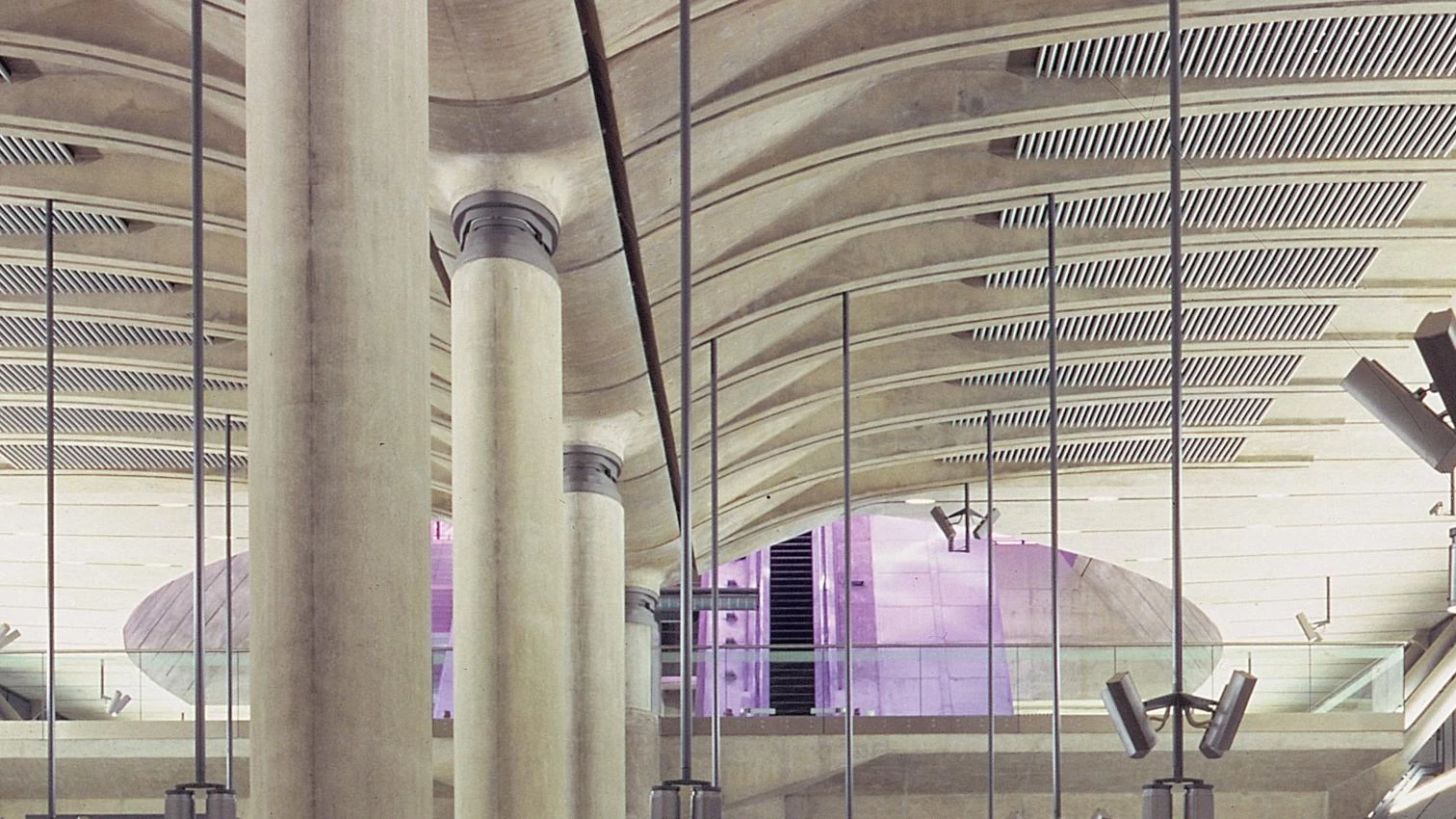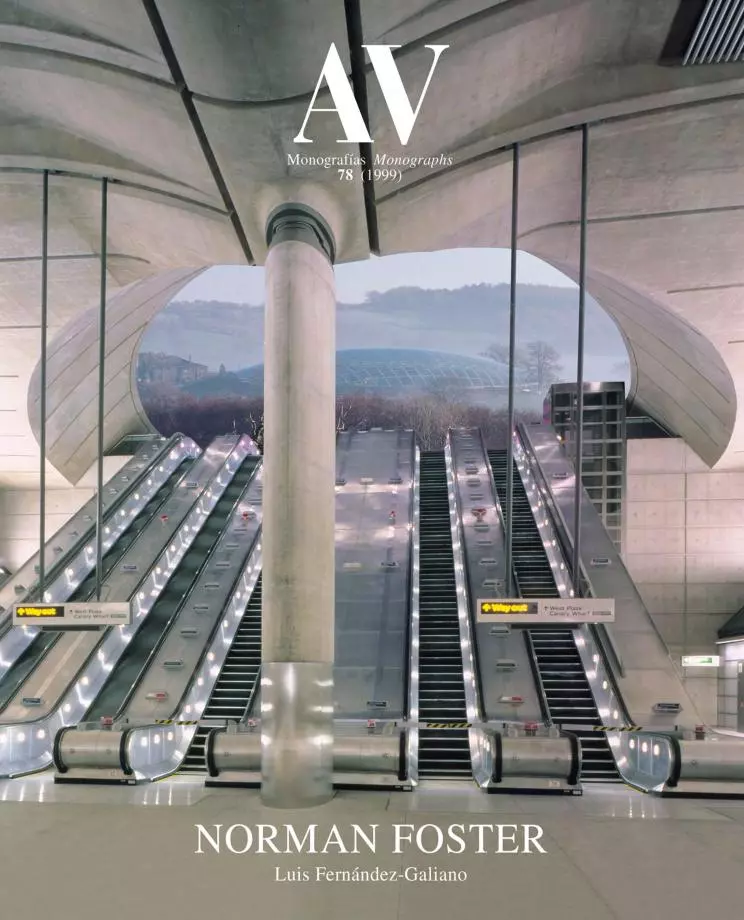Frozen Movements: Organic Shapes for Mechanical Transport

Some of the more seminal works of Foster in the 90s deal with movement, and among those, perhaps the more inspiring are those on the knifeedge between architecture and civil engineering: landing pads and flying roofs, road bridges and railways tunnels. In the case of the underground stations, the rare beauty of an architecture without facades, the exacting demands of mechanical and crowd movement, and the public dignity of vandalproof detailing are enhanced by the urban importance of entries, where the subterranean city breaks the ground to open the gates of mass mobility to the city on the surface. At Canary Wharf, the cathedral-like space, with the sculptural biomorphic concrete vaults – that remind of Calatrava’s, but also the Televisa project–, is as impressive as the superbly elegant glass domed entrances, whose tapered vaults carry the ‘fosteritos’ of Bilbao’s metro to a monumental scale. And also on the Jubilee line extension, the Greenwich interchange extends a gliding wing over the platforms for buses serving the station of the Millennium Dome, sheltering under its floating crescent the sleepless movement of vehicles and people, like a gently curved mechanical bird that has emerged from the depths of the earth and is detained at the moment of initiating its flight...[+]





